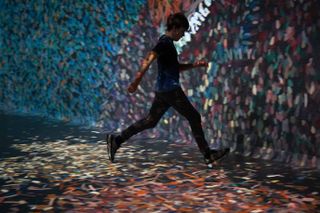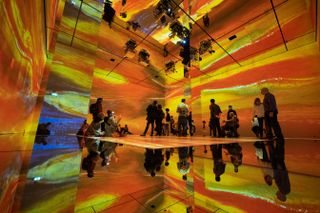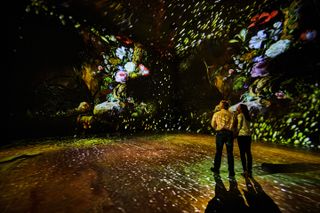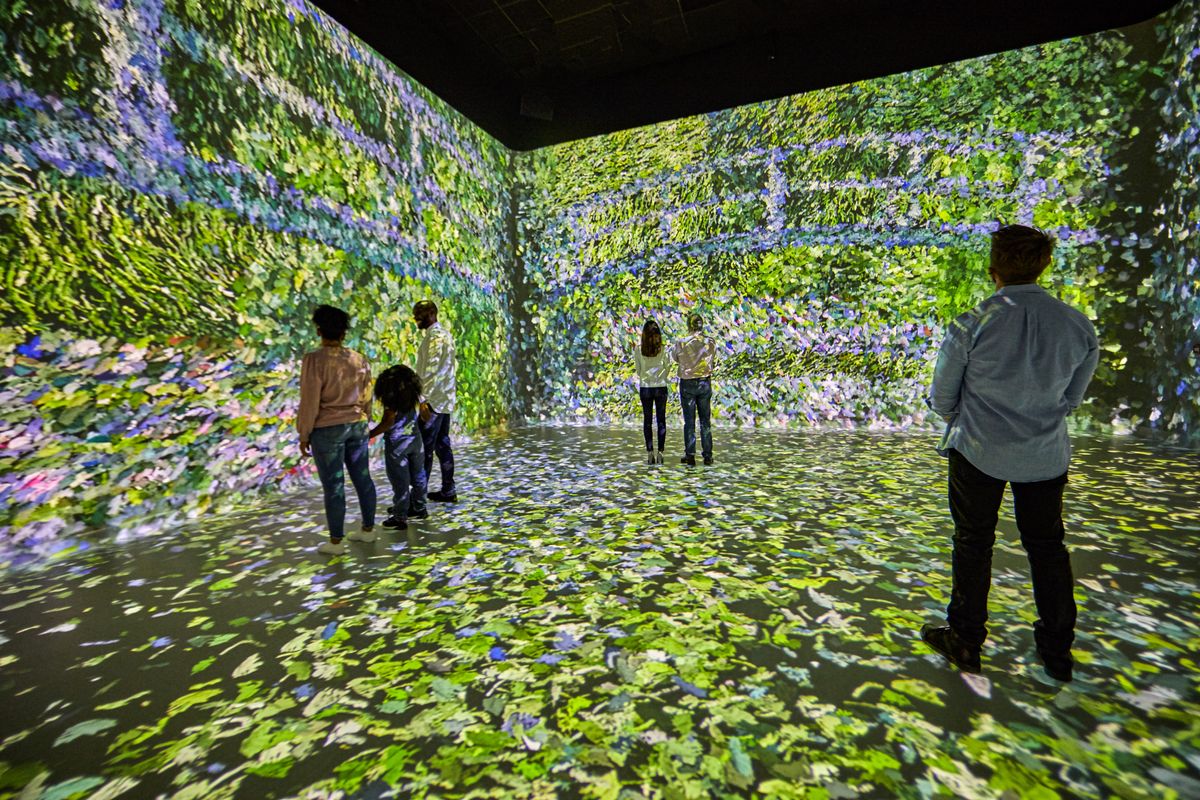Billed as London’s first permanent immersive digital arts experience, Frameless opened its doors in Marble Arch in October. Housed in a magnificent 30,000-square-foot-space that was formerly a cinema, Frameless offers visitors an extraordinary way to engage with art; multisensory and multidimensional, visitors are plunged right into the heart of some of the world’s most iconic works of art, literally enveloped by color, light and sound. With over 479 million pixels delivered by a million lumens of light and a score of classical and contemporary music delivered by 158 loudspeakers from EM Acoustics, Frameless is an unforgettable experience.
At a technical level, it could also be said that Frameless is something of a masterpiece. Dan Higgott was responsible for the sound design, working in tandem with Autograph who handled the audio system integration and data networking used by both audio and video. Higgott’s was to design a physical sound system covering the entire site.
[LEGOLAND Bolsters UK's First Flying Theatre Ride With EM Acoustics R10 System]
Visitors are guided through four distinct galleries: ‘Beyond Reality’, ‘Color in Motion’, ‘The World Around Us,' and ‘The Art of Abstraction. “The primary focus was the four immersive projection rooms, and the flexible corporate event space, but we needed audio coverage in every public area of the site, from the entrance doors to the toilets,” recalled Higgott. “An added challenge was that all the technology had to be invisible to the audience. Some of the immersive rooms have black ceilings where we can hide projectors and loudspeakers, but in the two larger rooms, even the ceiling space is part of the experience. So, I knew early on that I would need to conceal loudspeakers within the wall cavities.”

Having modeled the space to work out the optimal loudspeaker positions in what are extremely acoustically challenging spaces, Higgott then had to adapt the design to the physical reality, notably where the available depth of the wall cavities in which to place loudspeakers was sometimes as little as 180mm. After researching the various options on the market, the EM Acoustics EMS-41 was the clear favorite. “It’s a really impressive sounding box, when you consider just how small it is,” he said. “Additionally, because it is a passive speaker, there was no need to worry about cooling or providing power to technology hidden within a wall.”
Having established that the EMS-41 was the right choice for some of the smaller wall cavities, Higgott arranged a trip to the EM Acoustics factory with Frameless CTO Simon Kentish and Autograph’s Dave Prosser to listen to the rest of the EM range and finalize the specification. “I was extremely impressed with the Reference Series, and the R8 in particular proved to be a great option for us,” he recalled. “Firstly, the level of clarity and detail you get with the R8 is second to none. Secondly, the 110-degree dispersion would suit our application perfectly, as a wider dispersion would increase the spatial ‘sweet spot’ we could deliver in the rooms.
[SCN Installation Showcase 2022]
“In terms of subwoofer options, we ended up using a combination of boxes, depending on the space constraints of each area. I was particularly impressed with the S-48s for the low frequency response achieved in such a small footprint.”

Higgott specified R8s as the full range loudspeaker in each room. In the ‘Art of Abstraction’ and ‘Color in Motion’ spaces they were deployed in a ‘quad’ configuration that formed the backbone of the sound design. To increase the spatial audio resolution and pull the sound image lower so that sounds could be localized to the projected images, Higgott used EMS-41s embedded in custom-designed wall apertures, except in ‘The Art of Abstraction’ where he was able to use EMS-51s rigged to the top of the projection surfaces.
“Spatial audio was a key element for this project, as we wanted to be able to localize sound effects to the video content to enhance the immersive experience,” Higgott explained. “We used Innovate Audio’s panLab software to handle spatial audio processing. This turns every QLab audio cue into an object on a panner, which can be easily positioned and moved in space. The big advantage of panLab over some of the other solutions on the market is that the spatial audio information is essentially ‘printed’ right into the QLab cues as output level data. This means that we end up with all the advantages associated with working in a spatial audio environment, without having to run any additional hardware or software on an ongoing basis.”
[AV Network's top stories, product news, and expert insights]

Playback in all the rooms comes from Figure 53’s QLab, with system processing handled by Q-SYS Core Nanos, with one for each room, plus one for all the circulation areas. The whole site runs over Dante, from QLab right through to the amplifiers. An impressive number of loudspeakers–158 in total–cover the whole site including 72 EMS-41s, 30 R8s, and 27 EMS-51s plus a variety of subwoofers, all driven by a range of EM Acoustics amplifiers including six Di06D and six Di20D units from the company’s new Di 8-channel range.
“This was an amazing project that I was thrilled to have been a part of,” said Higgott. “I’ve been so impressed with the performance of the entire EM Acoustics loudspeaker range I specified for Frameless. The Reference Series range should be singled out for particular praise, truly exceptional sounding products. I’m very proud of what we have created, and big thanks go to the Autograph team without whom this wouldn’t have been possible.”










